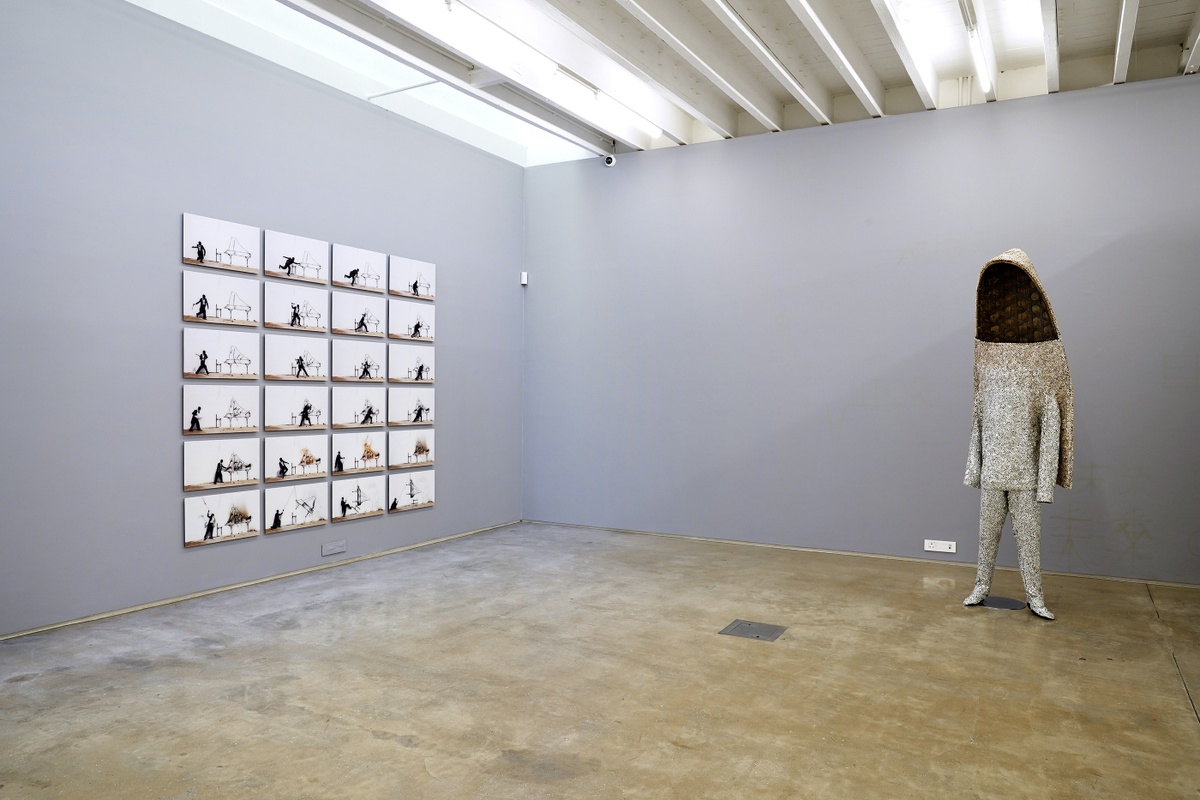Robin Rhode

In Piano Chair, a faceless figure assails a grand piano. Or rather, he assaults the image of a piano drawn on a side-street wall. At first striking, smothering, and then setting fire to the baby grand, the attacker resolves to hang it from a noose. Dressed in coat and tails, he appears as discontent composer or malevolent musician. The piano chair, for which the work is named, plays the part of hapless accomplice; the viewer, the role of witness. This strange and violent event takes place against an exterior wall, its paint chipped and worn. On the pavement below, weeds grow. This is not a setting for a recital, but the scene of a crime.
Piano Chair exists in two forms: as a series of twenty-four images hung in a grid and as a stop-motion animation. Set to a melancholy score composed by Arenor Anuku, the film runs for three minutes and fifty seconds. It recounts the same event – the same death – only in more frames.
b.1976, Cape Town
In all Robin Rhode’s work, line is primary – as formal device, as progression, as narrative structure. With the simplest propositions, he gives expression to imagined scenes. His work more often persists as document, the original offering only transitory. In charcoal, chalk and paint, Rhode creates sites of engagement within the city. The sidewalk becomes stage; an actor, always anonymous, appears. A series of photographs are taken, a stop-frame animation is made. Performance, drawing, photograph – the resulting works are all these mediums distilled to image, be it static or moving. The scene is later painted over; the actor departs; the set returns to inner-city wall. Largely produced in Rhode’s native Johannesburg, the works’ political implications are apparent, touching on such issues as urban poverty and violence, street culture and its aspirations. Rhode, however, considers himself more a formalist than social messenger, an artist concerned with mimesis – with art’s illusion – and the many tensions between image and object; the two-dimensional and the three-dimensional, represented and real. This is particularly true of his more recent work, which pairs both colour theory and geometry with the performing body.
